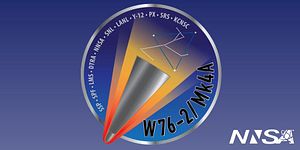The U.S. National Nuclear Security Administration—the agency under the U.S. Department of Energy responsible for the production and maintenance of the country’s nuclear arsenal—announced that the first production unit of a new low-yield warhead was produced on February 22.
The warhead, known as the W76 mod 2 or W76-2, was produced at the Pantex Plant in Amarillo, Texas, and will be used to provide a new low-yield submarine-launched ballistic missile (SLBM) capability called for by the Trump administration’s 2018 Nuclear Posture Review.
The warhead will be another option for the UGM-133A Trident II D5 SLBM. Currently, the D5 SLBM is capable of carrying up to eight warheads of either the W76 mod 0 or W76 mod 1, each of which has a 100 kiloton yield. Alternatively, some D5s can carry up to eight W88 warheads, which have a 455 kiloton yield each.
The precise yield of the W76 mod 2 is not known, but it is thought to be in the range of less than 10 kilotons. U.S. SLBMs are carried by Ohio-class ballistic missile submarines.
“Expanding flexible U.S. nuclear options now, to include low-yield options, is important for the preservation of credible deterrence against regional aggression,” the Trump administration’s 2018 Nuclear Posture Review noted.
The justification for the low-yield D5 in the document is specifically to “ensure a prompt response option that is able to penetrate adversary defenses.”
According to a statement from the U.S. National Nuclear Security Administration, the “W76-2 will allow for tailored deterrence in the face of evolving threats” with “credible and effective options at any level of escalation.”
While the U.S. National Nuclear Security Administration’s Stockpile Stewardship and Management Plan for the 2019 fiscal year underscored that production work would run through 2024 on the W76-2, the Trump administration’s budget blueprint for the 2020 fiscal year notes that it “completes development and production of the W76-2 warhead.”
While the Trump administration has claimed the W76-2 will provide a prompt, low-yield option to the United States to manage Russian nuclear coercion, critics have argued that the new capability creates a discrimination problem because adversaries, including Russia, would be unable to tell whether an incoming warhead was low- or high-yield until a detonation occurred.
The precise nature of the modifications made to the original W76 to convert it to the W76 mod 2 aren’t publicized, but the new warhead may be a single-stage modification that uses the original two-stage thermonuclear weapon’s fission primary to generate the low-yield effect.

































